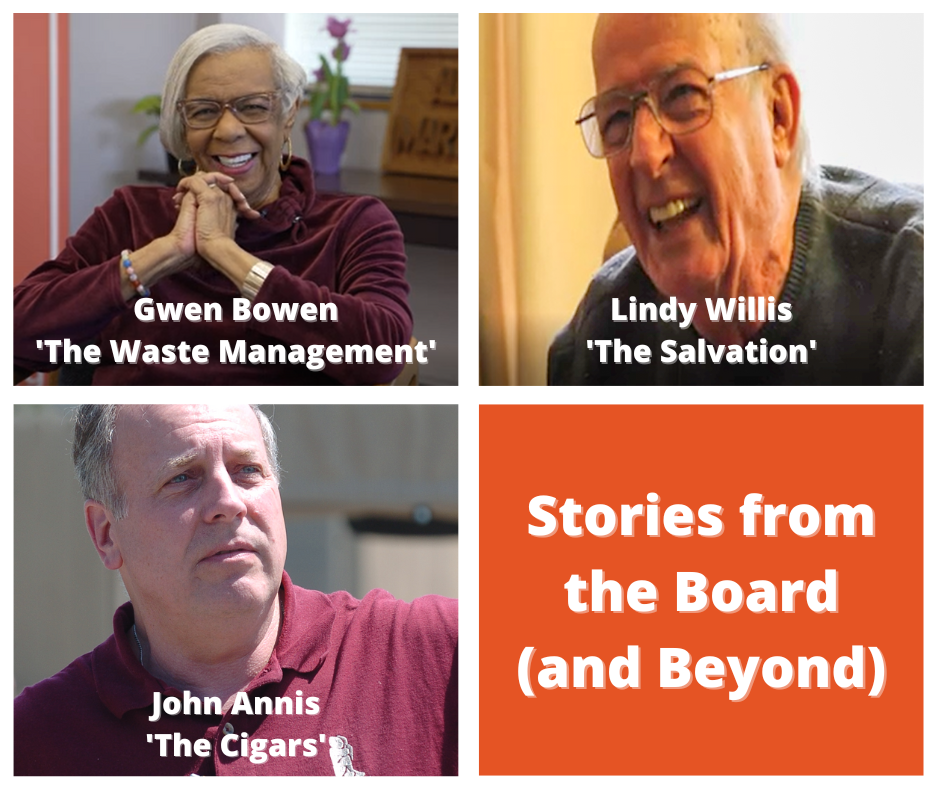File Under ‘O’
When we talk to people about their memories of Aunt Martha’s, some stories can only be cataloged as “Other.”
This week, we follow board members (and Others, of course!) from the board room to the back nine, with a stop or two along the way.
We’ll hear about an unexpected visit from the Sisters of the Salvation Army. And we’ll imagine what might have been by lifting the lid on a story that’s no waste of your time.
The Cigars

What really stands out, back when I was President [of the Board], working with Gary, we had golf outings. Gary and I used to sit out on a golf cart at one of the holes, and the greatest thing was all of the cigars Gary used to bring.
Gary brought a bag full of cigars and every golfer came to our hole because they knew he had those cigars.
That’s what stands out. Sitting there in that golf cart with about 250 cigars. And enjoying some of them ourselves.
John Annis
Those Big Trucks Keep Rolling

All of the sudden, [Gary] brought this great plan to the Board – to invest in the waste management company.
I said, “What the h*** do you mean, ‘waste management’? We’re not cleaning up garbage cans, we’re raising babies!”
I fought him tooth and nail on it because I thought it was such a terrible thing to bring into a social service organization.
Every time I see one of those big trucks passing down the street, I see all the money we could have made on that investment.
But that’s where my head was. And like I said, those big trucks keep rolling.
Gwendolyn Bowen
‘The Kind of Stuff that Makes it Work’

I was working with a client [at the drop-in center] and it was a was a nice summer evening. So we went out, across the street and sat down in the parking lot next to the church.
We’re down there, laying on the asphalt, chatting. And Gary shows up with a carload of ladies!
I later learned that they were ladies from the Salvation Army who were looking at [Aunt Martha’s] to decide about funding.
Later I said to Gary, “Why didn’t you tell me that they were coming?”
He said, “They saw what you were doing and thought it was wonderful. They said, ‘That’s the kind of stuff that makes it work.’”
Lindy Willis















